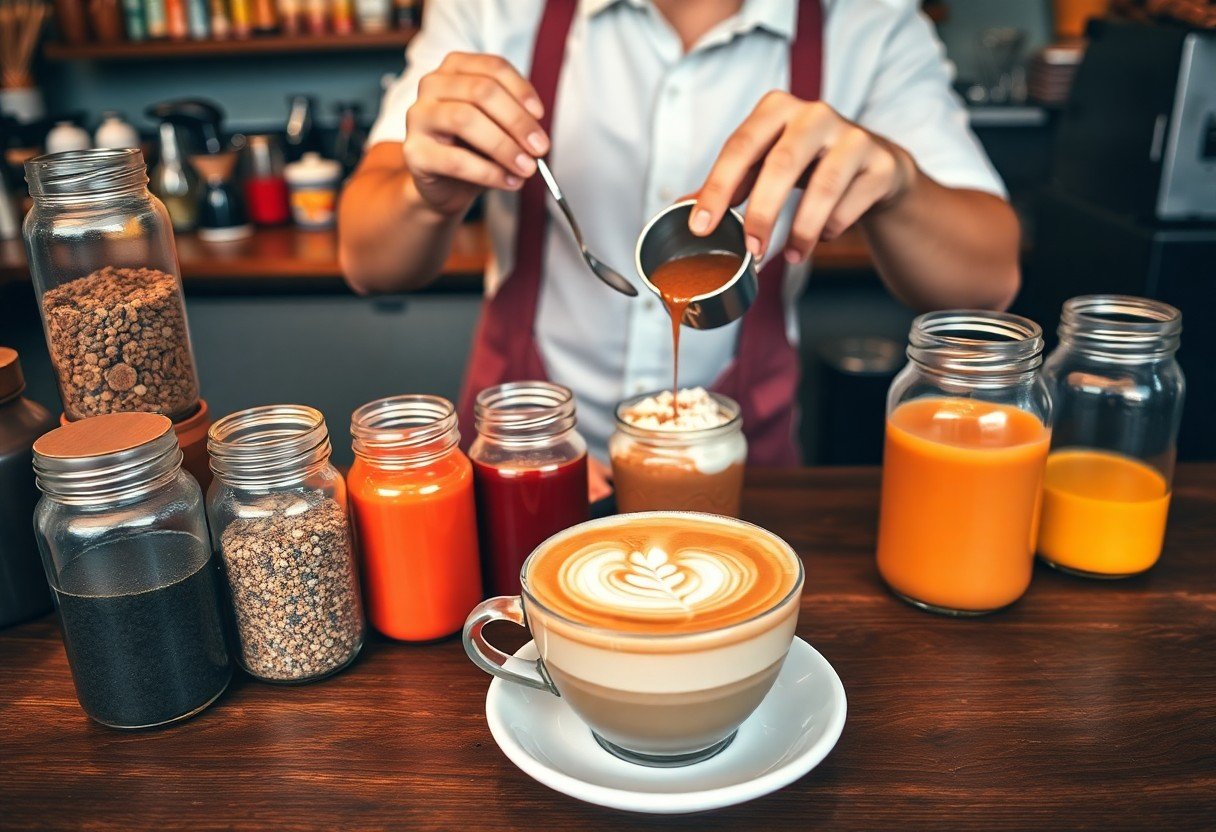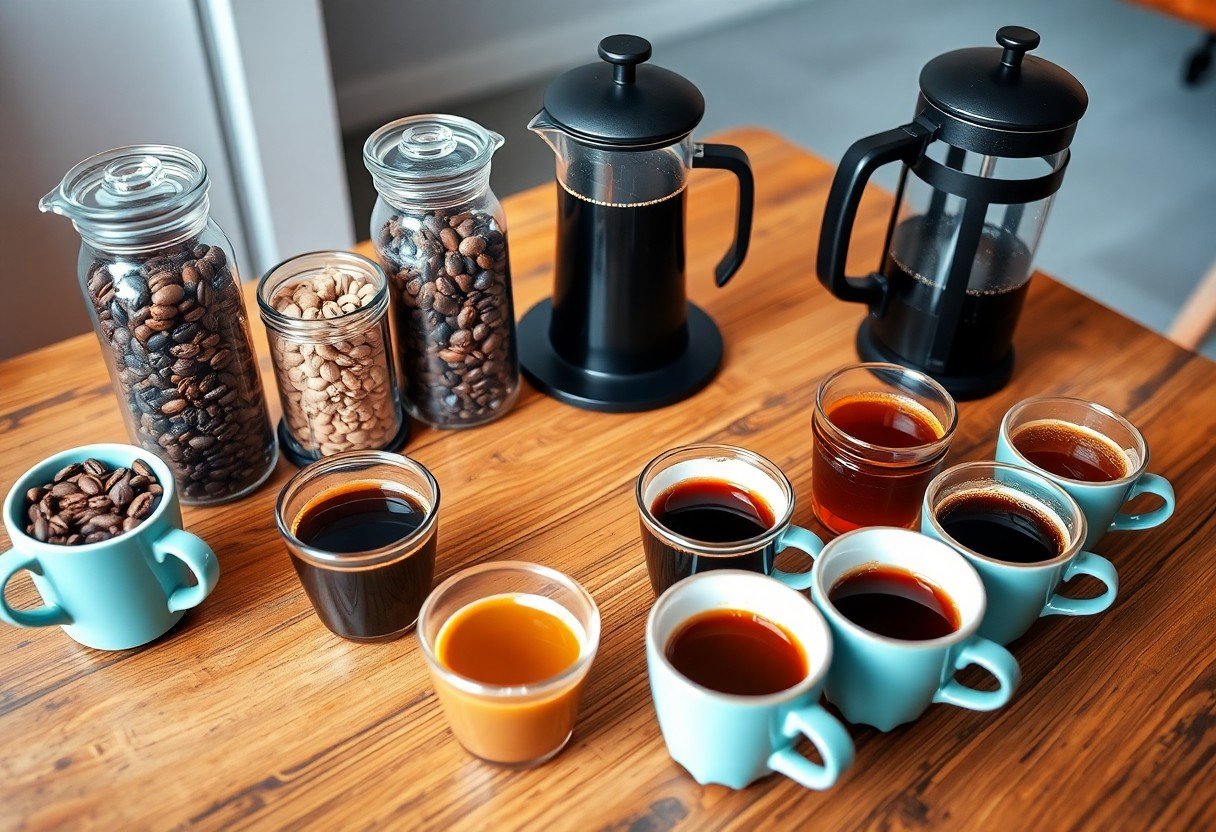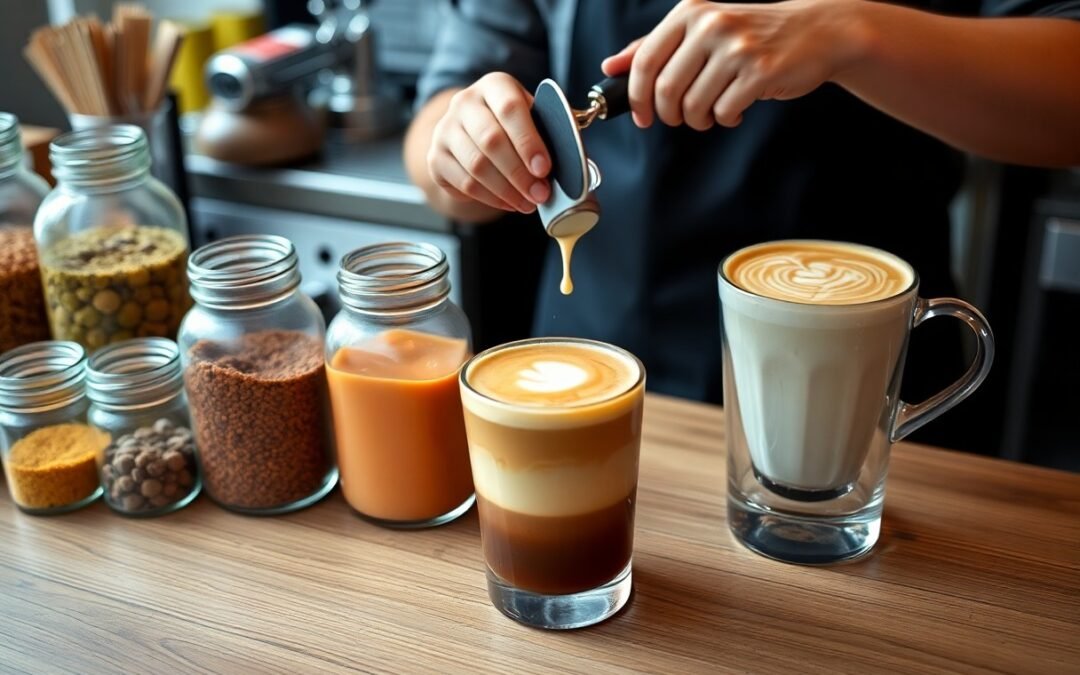There’s a world of rich, aromatic flavors waiting for you in artisan coffee, and the right brewing method can unleash these delightful profiles. By understanding various techniques and how they influence taste, you can elevate your coffee experience and savor every sip. Whether you prefer the mellow notes of a pour-over or the robust essence of a French press, this guide will empower you to enjoy smooth artisan coffee like never before.
The Art and Science of Coffee Bean Selection
Selecting the right coffee bean is a blend of art and science, where your choice directly impacts the final flavor of your brew. The journey begins with understanding various species, primarily Arabica and Robusta, each offering unique taste profiles. Within these species, factors like processing methods, roasting levels, and freshness play pivotal roles. A single-origin bean from Ethiopia can deliver vibrant fruit notes, while a Brazilian blend might present rich chocolate undertones. Tasting and experimenting with different beans will help refine your palate and enhance your coffee experience.
Identifying Flavor Profiles in Beans
The Role of Origin: Terroir and Its Influence
Mastering Brewing Techniques for Optimal Flavor Extraction
To unlock the full potential of your artisan coffee, mastering brewing techniques is vital. Each method highlights different flavor profiles, allowing you to tailor the experience to your palate. By adjusting variables such as time, temperature, and grind size, you can enhance the nuances in your coffee, resulting in a more satisfying cup that truly reflects the quality of your beans.
Exploring Different Brewing Methods: Pour Over, French Press, and Espresso
Each brewing method offers unique characteristics; for example, pour-over emphasizes clarity and brightness, French press provides a full-bodied and rich experience, while espresso delivers a concentrated and intense flavor. Experimenting with these methods allows you to discover which best suits your taste preferences. Understanding the specific techniques used in each brewing method is the key to achieving optimal flavor extraction.
Understanding Brewing Variables: Time, Temperature, and Grind Size
The extraction process is affected by three main variables: time, temperature, and grind size. Shorter brew times often yield lighter flavors, while longer times can produce bitterness. Different temperatures influence solubility; ideally, water should be between 195°F and 205°F for most methods. Finally, the grind size affects surface area exposure, with finer grinds extracting more quickly and coarser grinds requiring more time.
Understanding Brewing Variables: Time, Temperature, and Grind Size
| Variable | Impact on Flavor |
|---|---|
| Time | Shorter brew times yield lighter flavors; longer times can introduce bitterness. |
| Temperature | Most methods perform best between 195°F and 205°F, affecting extraction rates. |
| Grind Size | Finer grinds extract faster, while coarser grinds require longer extraction for flavor. |
Manipulating these brewing variables allows you to craft a coffee that matches your preferences. For instance, a pour-over with a medium grind and a brew time of three minutes at 200°F can highlight fruity notes, whereas a French press with a coarse grind steeped for four minutes at slightly below boiling will yield a richer, heavier body. By tailoring these elements, every cup becomes an opportunity for exploration and enjoyment.
Enhancing Flavor with Water Quality and Ratios
Your coffee’s taste is significantly influenced by the quality of water and brewing ratios used. While many overlook this aspect, the minerals in water can enhance or detract from the coffee’s natural flavors. Using filtered or purified water not only removes impurities but can also help achieve a more balanced extraction. Adjusting the coffee-to-water ratio further allows you to customize the strength and richness of your brew, ultimately enhancing your overall coffee experience.
The Impact of Water Composition on Coffee Taste
Perfecting Brew Ratios for Flavor Balance

Experimenting with Additives: Beyond Basic Cream and Sugar
Taking your coffee experience beyond just cream and sugar opens a world of flavor possibilities. You can explore various ingredients that enhance and elevate your brew. Try adding a pinch of cinnamon or nutmeg for a warm spice profile, or consider flavored syrups like vanilla, hazelnut, or caramel for a sweeter twist. As you experiment, you’ll find that even small adjustments can create a much richer flavor experience in your cup.
Exploring Flavor Enhancements: Spices, Syrups, and Alternative Milks
Incorporating spices like cardamom or cocoa powder can dramatically transform your coffee’s character, providing layers of complexity that complement the bean’s natural flavors. Flavored syrups, whether homemade or store-bought, introduce new dimensions, and alternative milks such as almond or oat add their unique profiles, enhancing the overall taste without overwhelming it.
The Art of Flavor Pairing: Complementing Coffee with Food
Pairing coffee with food creates a synergy that enhances both the beverage and the meal. Dark roasts often pair well with rich, chocolatey desserts, while lighter coffees can complement citrus-based pastries. Experiment with contrasting flavors—think a bright, fruity coffee alongside a buttery croissant—to discover unexpected harmonies that delight the palate.
Coffee’s versatility allows it to highlight different notes in food. For instance, a nutty Brazilian coffee’s earthiness can enhance the umami of a savory cheese platter, while floral Ethiopian coffees can beautifully balance the sweetness of a carrot cake. Tailoring your food pairing to the specific profile of your coffee not only accentuates its strengths but also creates a memorable dining experience. Look into local artisanal options or seasonal specialties to further enrich your pairing adventures, leading to delightful discoveries on your taste journey.

Cultivating a Coffee Tasting Experience
Design your coffee tasting journey to explore a spectrum of flavor profiles, enhancing your appreciation for artisan brews. Start by selecting various beans from different regions, each presenting unique characteristics influenced by their origin, processing methods, and roast levels. Create a relaxed atmosphere to encourage focus on nuances in flavor, aroma, and mouthfeel. You might even consider pairing your coffees with light snacks to complement the tasting notes and elevate the experience.
Creating a Home Coffee Tasting Adventure
Your home serves as the perfect setting for a coffee tasting adventure. Start by gathering a selection of coffees, including single-origin and blends, along with important tools like a grinder, scale, and brewing devices. Invite friends or family members to share in the experience, each sampling and discussing individual cups. Use flavor wheels as a guide to articulate the different taste notes you encounter, bringing depth to your understanding of each brew.
Engaging the Senses: Aromatics, Acidity, and Aftertaste
Focus on the intricate components of your coffee, especially aromatics, acidity, and aftertaste. Each element plays a distinct role in the overall flavor profile. Notice how the aroma draws you in before the first sip, often carrying hints of fruit, nuts, or chocolate. Acidity, which shouldn’t be confused with bitterness, brightens and enlivens the coffee, while the aftertaste reveals lingering flavors that can be sweet, clean, or even complex. Engaging all your senses results in a richer tasting experience.
Aromatics are the first indication of your coffee’s quality. Various beans might emit scents reminiscent of floral, fruity, or nutty profiles. Once brewed, acidity brings vibrancy; a well-balanced coffee may exhibit citric or malic acidity, contributing to a lively mouthfeel. After tasting, pay close attention to the finish. You may find the aftertaste smooth and lingering or sharp and fleeting. Each sip offers opportunities to discover subtleties, allowing you to deepen your knowledge and appreciation for fine coffee.
To wrap up
Conclusively, by experimenting with various brewing methods such as pour-over, French press, and espresso, you can unlock the full potential of smooth artisan coffee flavor profiles. Pay attention to factors like water temperature, grind size, and brew time to tailor each cup to your taste. Your choice of beans and their origin will further enhance your coffee experience, allowing you to appreciate the complexity and depth of flavors. Embrace the art of brewing to elevate your coffee enjoyment and make every sip a delightful exploration.
FAQ
Q: What are the best brewing methods for highlighting artisan coffee flavor profiles?
A: Pour-over, French press, Aeropress, and espresso are excellent methods for extracting the unique flavors of artisan coffee. Each method allows for different extraction times and temperature controls, enabling you to emphasize various tasting notes.
Q: How does water temperature affect the flavor of artisan coffee?
A: Water temperature significantly impacts extraction. The ideal range for brewing most artisan coffees is between 195°F to 205°F (90°C to 96°C). Higher temperatures may over-extract and result in bitter flavors, while lower temperatures can under-extract, leaving the coffee flat.
Q: What role does grind size play in brewing artisan coffee?
A: Grind size influences the surface area of the coffee, affecting how quickly flavors are extracted. Coarse grinds are suitable for methods like French press, while fine grinds work well for espresso. Finding the right grind size for your chosen brewing method is necessary for balanced flavor extraction.
Q: How can I enhance the flavor of my artisan coffee during brewing?
A: Enhancing flavor can be achieved by experimenting with coffee-to-water ratios, using freshly ground beans, and incorporating pre-wet or bloom techniques. These factors help unlock the coffee’s full flavor potential, offering a more nuanced tasting experience.
Q: Is it important to use filtered water for brewing artisan coffee?
A: Yes, using filtered water is important as it eliminates impurities and unwanted mineral flavors that can impact the taste of your coffee. Clean, fresh water ensures that the natural flavors of the artisan coffee shine through in the final brew.

